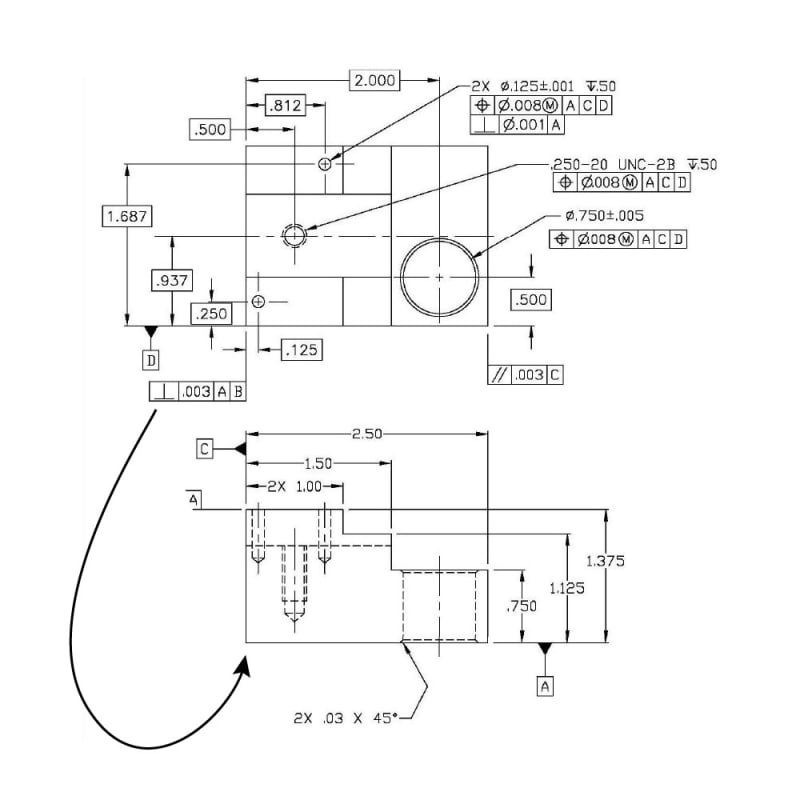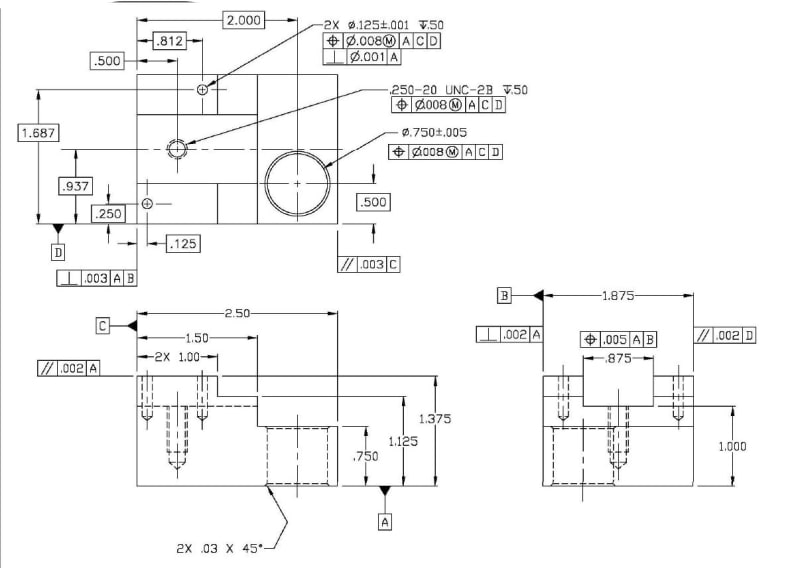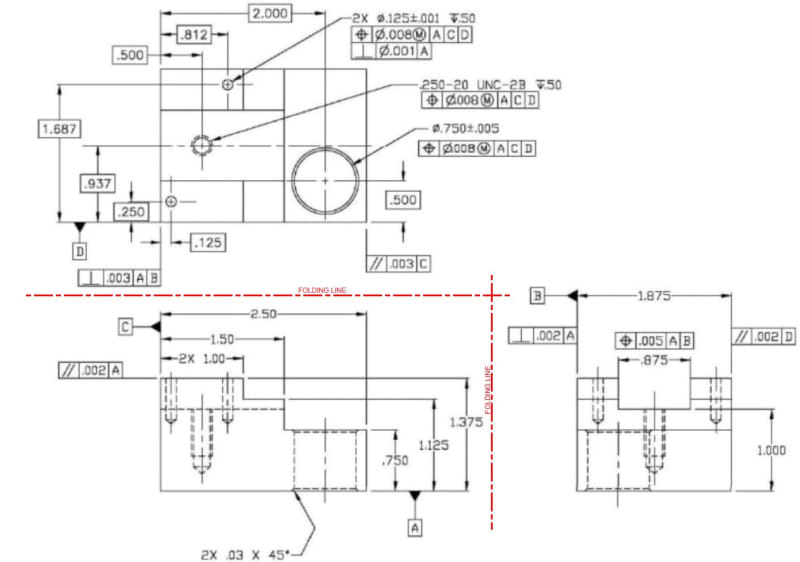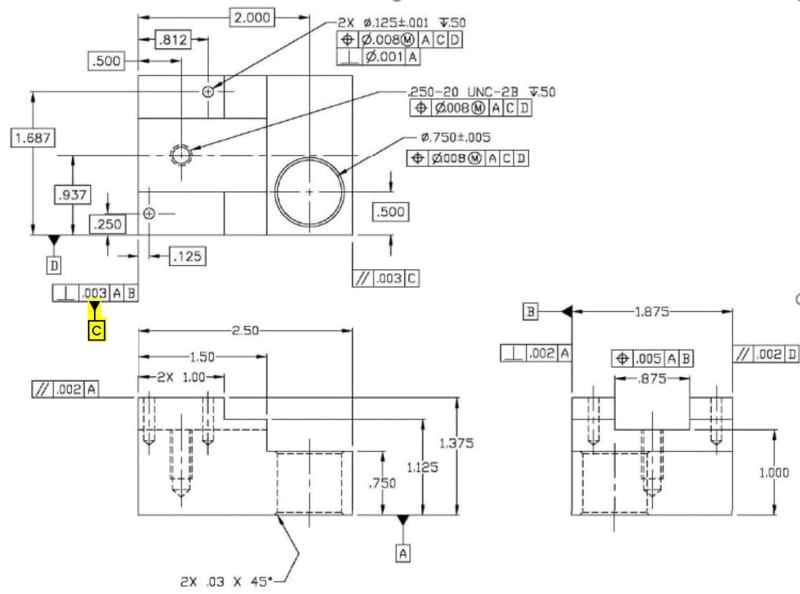sendithard,
We can't have datums without physical datum features. You must identify and tolerance your datum features, from which your theoretical datums are derived. Actually as per the standard your datums are "a theoretically exact point, axis, line, plane, or combination thereof derived from the theoretical datum feature simulator" in Y14.5-2009 or "derived from the True Geometric Counterpart" in 2018. So your datum features determine the geometry/location/orientation and behavior of your datum feature simulators/TGC from which your datums are derived. In practice which really matters is your datum features, their associated simulator/TGC, and the interaction between them - the theoretical "datums" are merely a consequence thereof, hence why as 3DDave suggests they are "just an idea in your head". And hence why whenever the subject comes up and theres discussion of whether a datum feature/simulator/TGC establishes a point/plane/line or combination thereof my response is typically "who cares? whats your simulator/TGC look like? whats its behavior and how many DOF does it constrain and how?"
Anywho - to your original question, the view in which you apply your FCF rarely matters (I think theres a few special cases in which it does) as long as its clear what feature(s) it applies to. If theres something which improves readability/comprehension of the drawing its usually a good idea, but rarely required. The exception in your case is the application of the chamfer dimension on hidden lines, this I believe is not allowed or at least not recommended - all the examples in the standard are shown in section views, though I can't remember if its explicitly stated.





